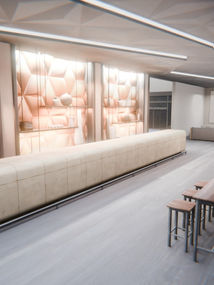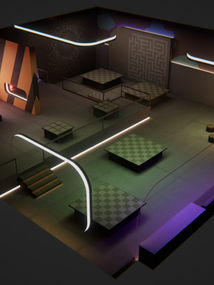


Virtual Reality Training Hub
Immersive Learning for a Fortune 500 Enterprise
Overview:
In collaboration with 5D Technology Solutions, I developed the Virtual Reality Training Hub, a multi-platform training and collaboration system for EnPro Industries, a Fortune 500 company. The initiative combined immersive training built in Unity with a persistent, explorable 3D campus in Mozilla Hubs to support remote onboarding, education, and team interaction.
My Role
I led the design, development, and optimization of interactive 3D environments and training scenarios tailored for VR, desktop, and mobile users. My work included avatar integration, spatial design, environment optimization, and instructional media embedding across the platform.
Key Features & Deliverables
-
Unity VR Training Application
Designed an interactive training experience using Unity, featuring fully rigged avatars created in Character Creator 3 (Reallusion) with facial animations built using iClone. Dialogue systems were implemented with branching logic and synced audio, creating a scenario-based, guided training experience for new employees.
-
Mozilla Hubs Virtual Campus
Created an interconnected set of virtual environments including a central hub, auditorium, breakout rooms, lounges, wellness zones, and collaborative workspaces. These were used for ongoing remote meetings and team-building after the COVID-19 pandemic shifted company operations.
-
Learning & Engagement Design
All environments were built with easy navigation, accessibility, and learning integration in mind. Educational content, downloadable resources, and video embeds were embedded directly into the virtual spaces. Custom collision boundaries and audio zones helped ensure intuitive, distraction-free exploration across devices.
Technical Optimization & Pipeline
Every environment underwent a rigorous optimization process to ensure performance across platforms (VR, desktop, mobile):
-
Scenes maintained under 50MB, with <50k triangles, and fewer than 10 unique materials per environment
-
No real-time lighting; all materials and shadows were baked to reduce performance load
-
Texture maps were compressed, resolution-limited, and reused strategically
-
The full pipeline included concepting, pre-viz, modeling, UV unwrapping, texturing, light baking, and mesh/material optimization
This level of performance-conscious design allowed the environments to run smoothly on mobile browsers and lightweight headsets without compromising the immersive feel or design fidelity.




















